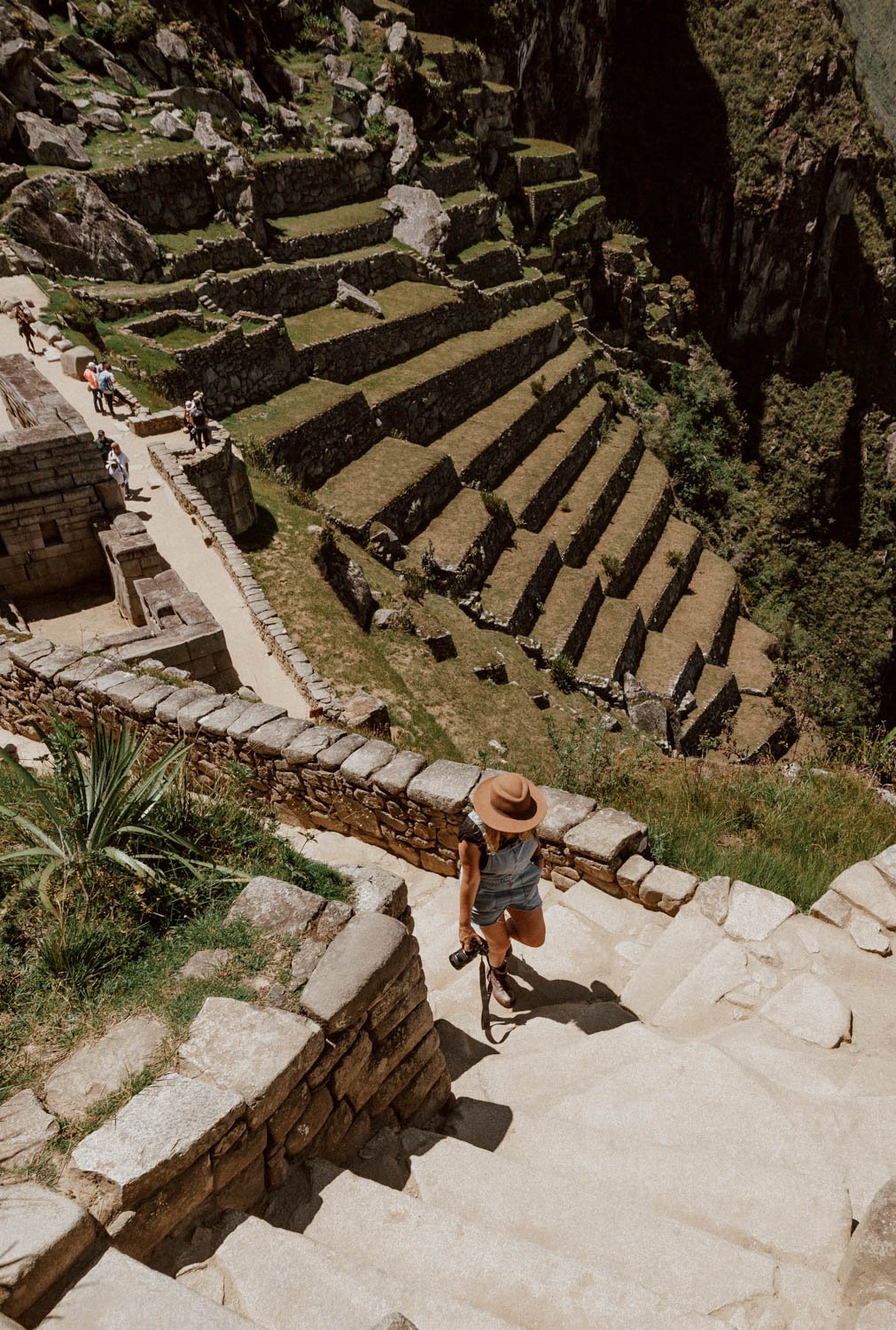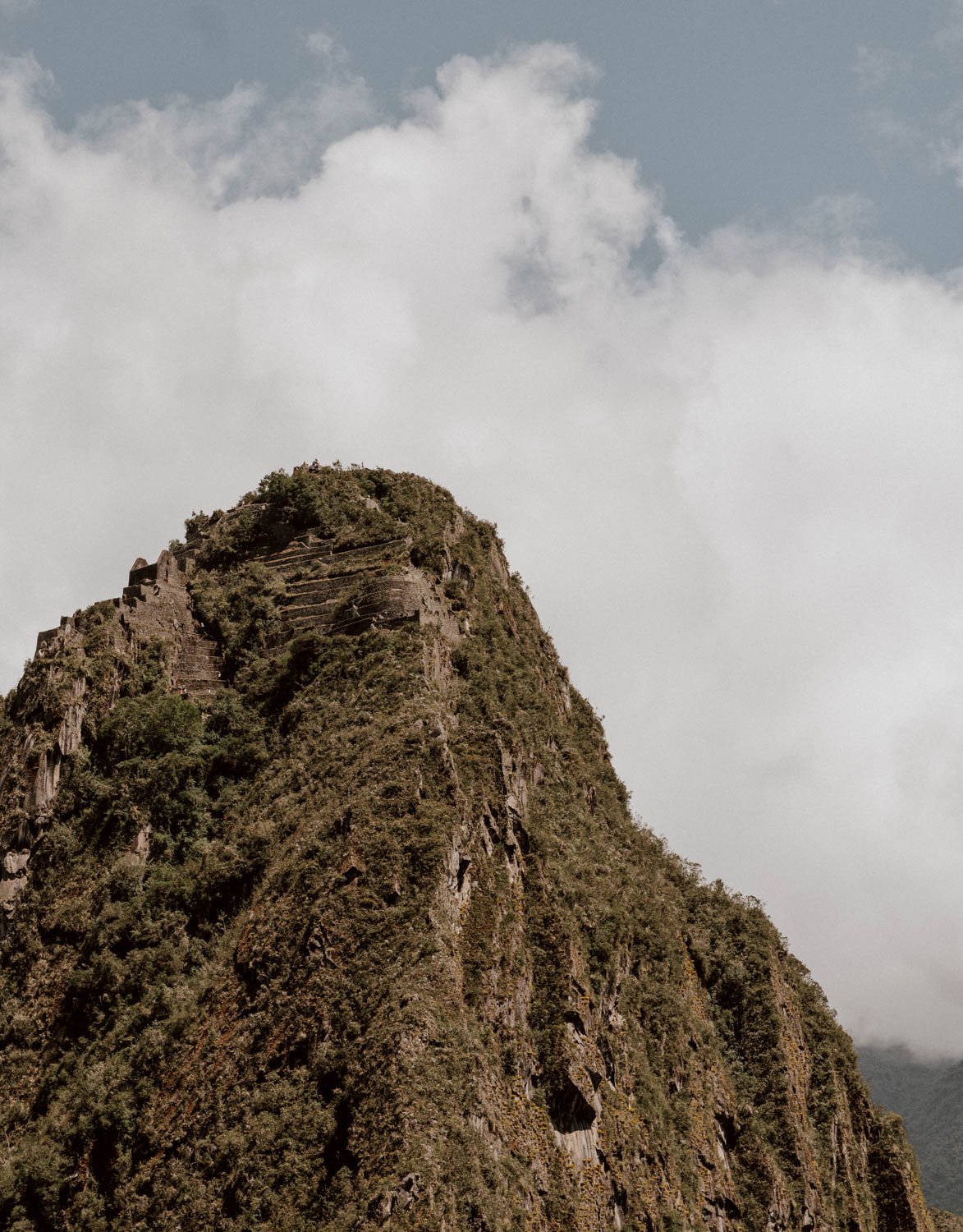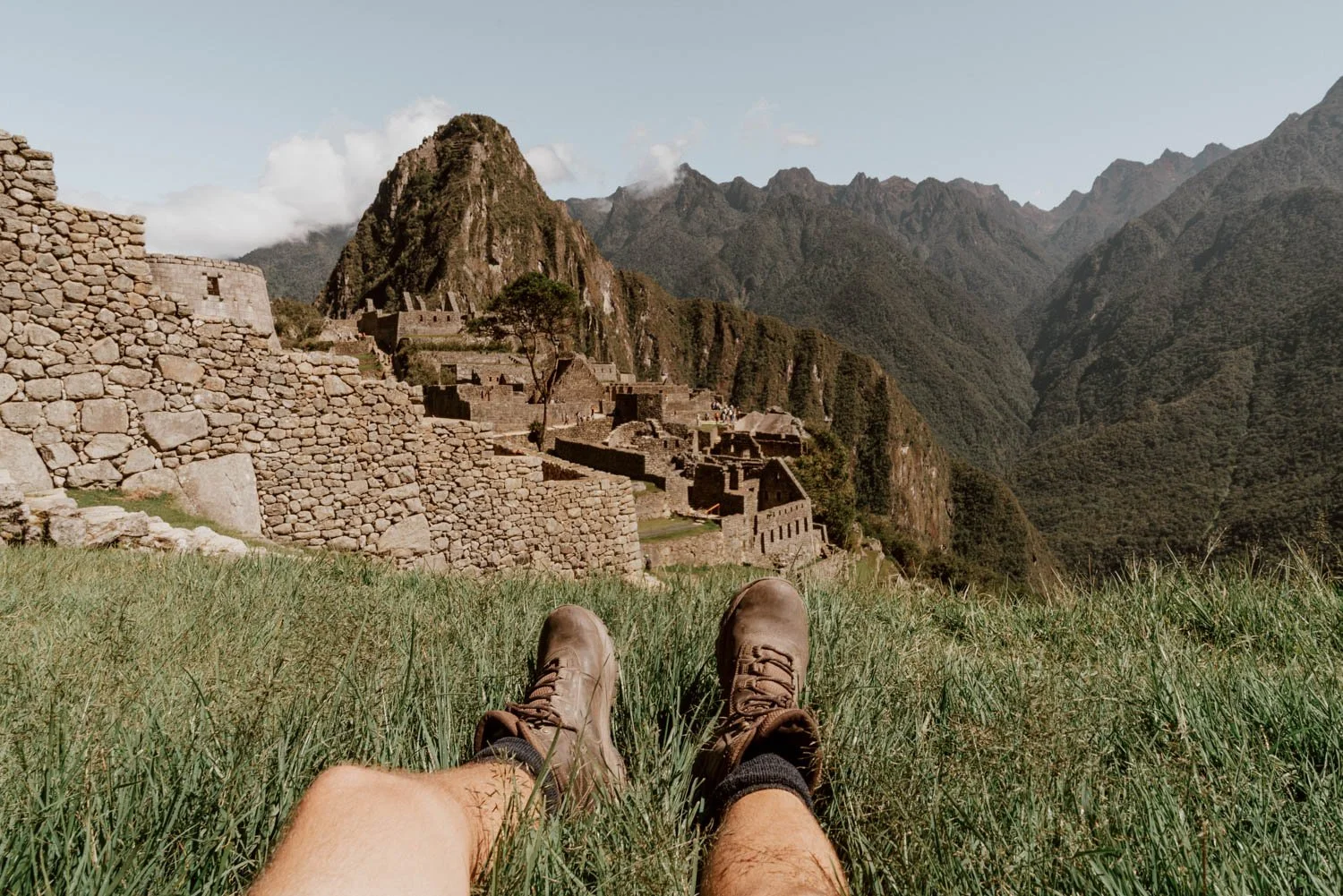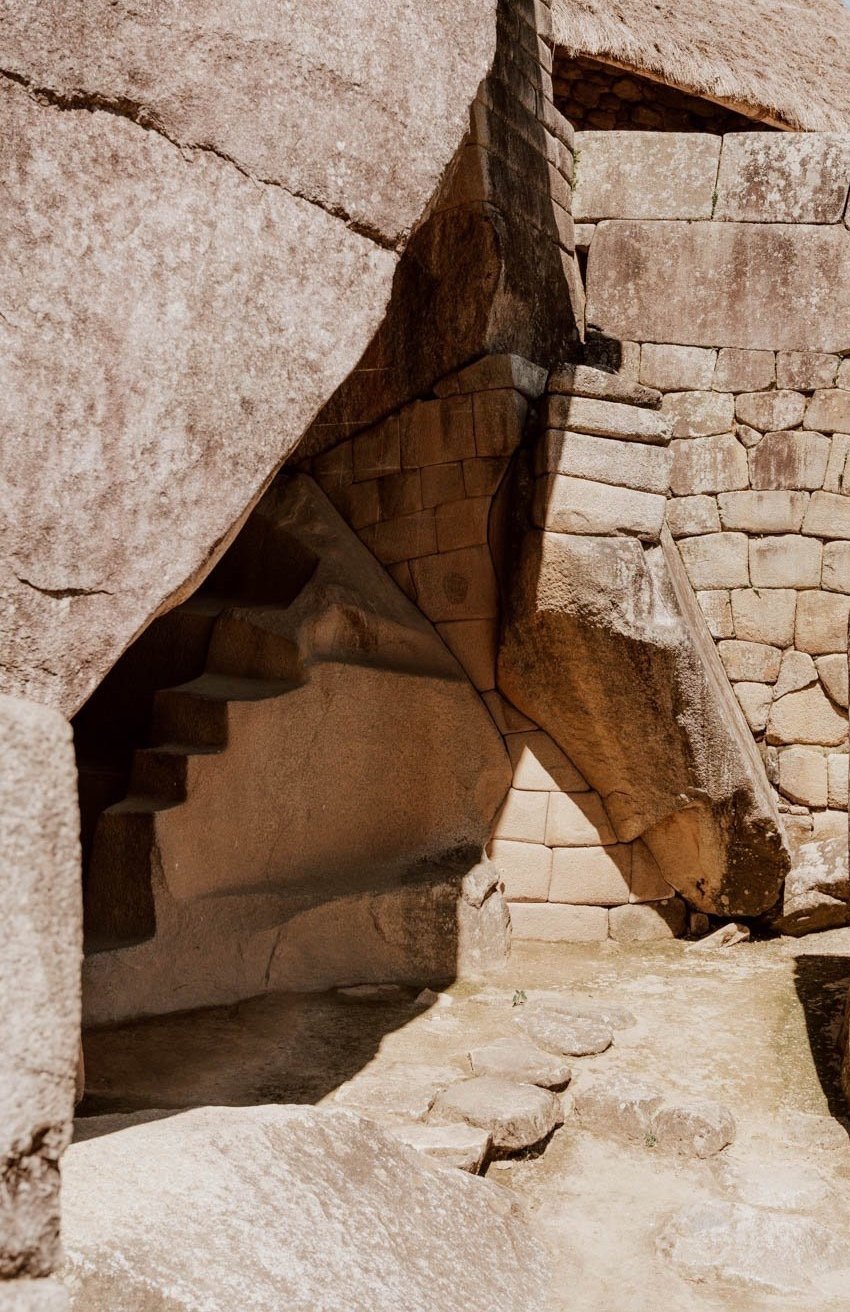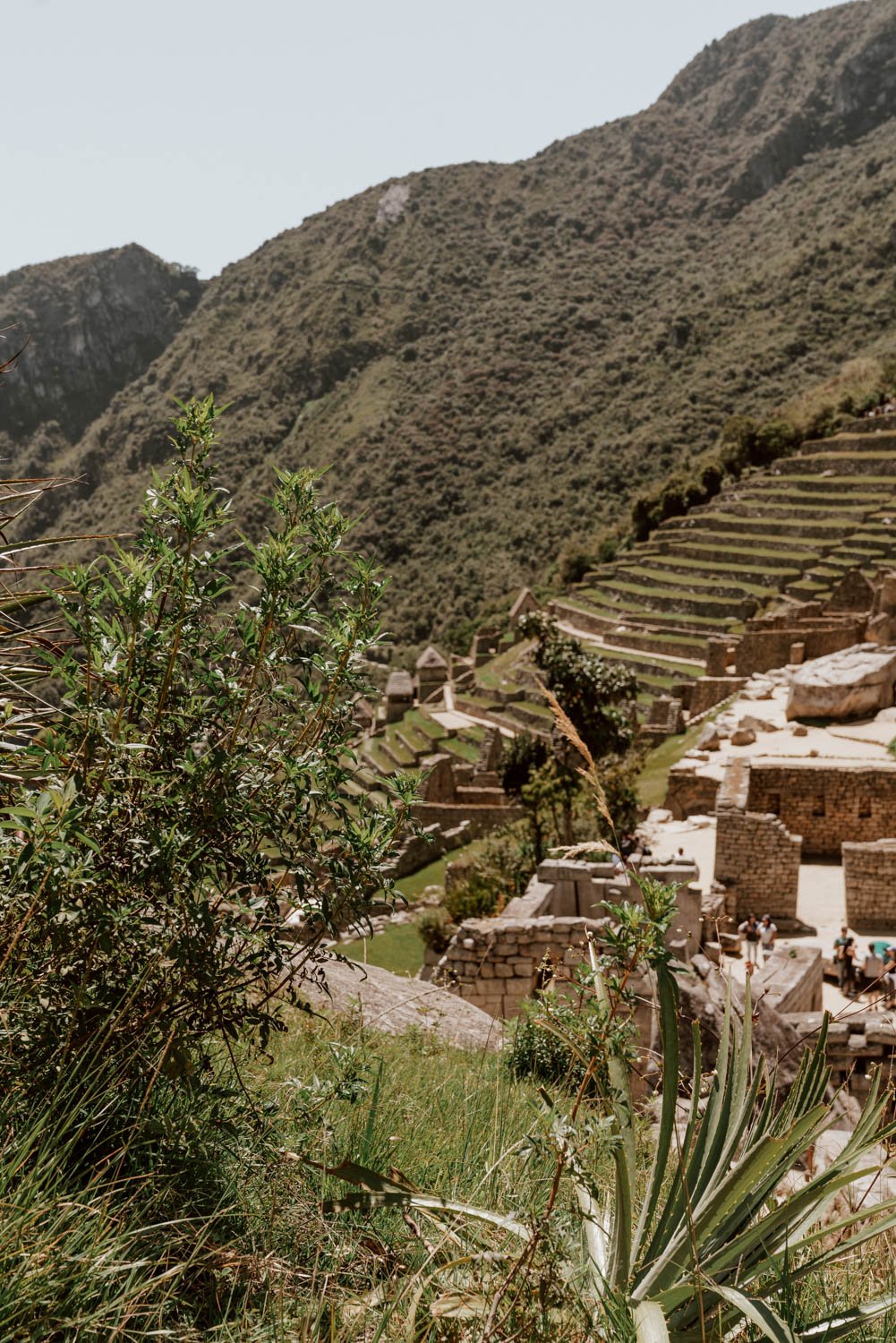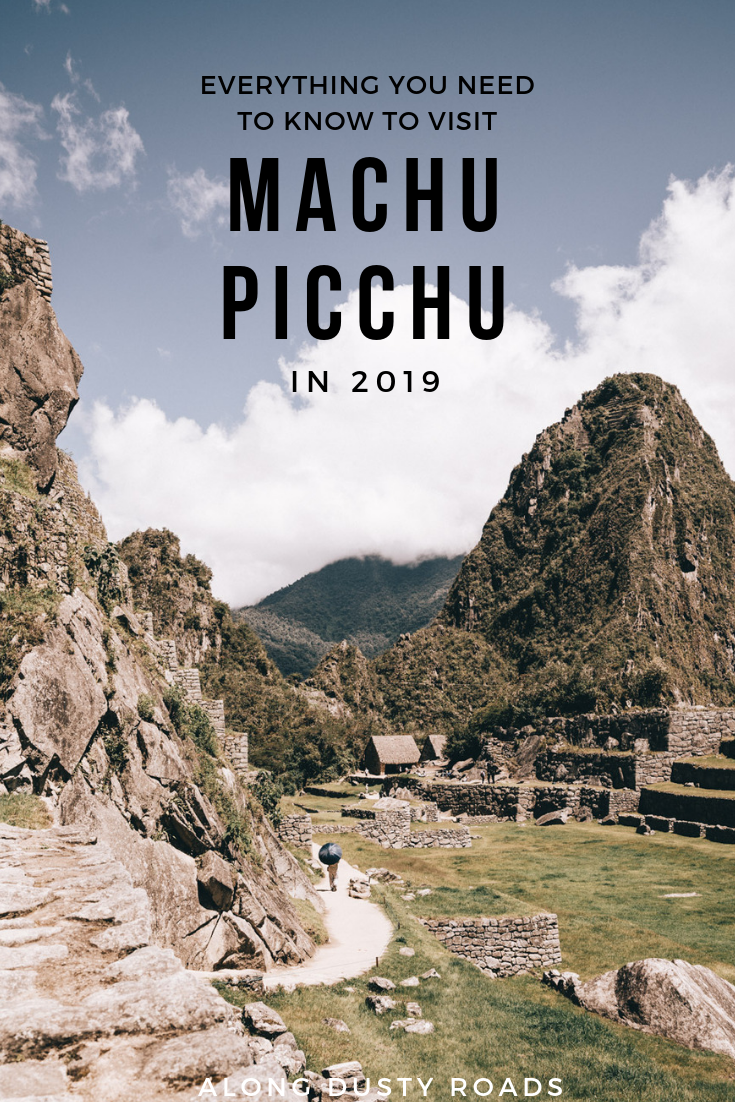Planning a trip to Peru? The guide has everything you need to know to visit Machu Picchu, including the latest rules, how to get there and - most importantly - how to buy tickets for Machu Picchu.
Completely Updated in December 2021
For many, Machu Picchu isn’t simply a stop on a convoluted trip through the Americas - it is the reason to board a plane to Peru in the first place. Regularly featuring in ‘most visited tourist attractions in the world’ round-ups, and with more than a million visitors a year, it was only a matter of time before stricter rules and regulations were brought in to conserve this New Wonder of the World for future generations to come, better protect it from over-tourism, and improve aspects of the visitor experience.
The first set of new rules were implemented in 2019 (such as a four-hour time limit), however upon re-opening in 2021, much more stringent limitations have been brought in - and for any person visiting Machu Picchu in 2022, it is essential that you are aware of changes.
This includes a reduction to visitor numbers, a change in entry times and tickets, an introduction of specific new routes, what is acceptable inside, what you can take into the site, how much time you have in there, and when you will need to buy that coveted sunrise ticket.
Simply put, do not visit Machu Picchu without reading this guide - here’s everything you need to know to plan a trip in 2022!
The Essentials
// New rules & regulations for 2021 onwards
// Limitations on visitor numbers
// Book tickets in advance
// Multiple ticket types
// Can be reached on tour or independently
// Can be done as day trip from Cusco
// Inca Trail is only multi-day trek that finishes in Machu Picchu
New rules, regulations and limitations for visiting Machu Picchu in 2022
As of January 1st 2019, a number of significant new rules have come into play with the aim of getting Machu Picchu off of UNESCO’s naughty list and becoming more sustainable - further significant changes were then made when the site re-opened in 2021.
Some of these measures were long overdue and will hopefully better preserve the site and stave off the symptoms and impact of overtourism, however they may prevent you from experiencing the site exactly how you hoped if you don’t understand and prepare for the changes ahead of your visit.
Limitations on Number of Daily Visitors
Since 2021, strict limitations have been placed on the number of tourists that can enter Machu Picchu each day. This was partly done for health reasons, but it is rumoured that these limits will remain for some time.
Machu Picchu Citadel | 2100
Huayna Picchu Mountain | 200
Machu Picchu Mountain | 400
Huchuy Picchu Mountain | 200
Standard Inca Trail Tickets | 350
Short Inca Trail Tickets | 150
New Routes Around Machu Picchu
In what is clearly a win for preserving this ancient and highly sacred site, gone are the days when you could clamber about on the ruins - now you need to follow a designated route as part of your visit.
There are four official routes around the site, and you can unfortunately only choose one:
Route 1 | Beginning at the entrance, this route heads first to the upper sector, over the agricultural terraces, past the guard’s house, through the main entrance to the urban sector, then the Temple of the Sun, and from there over the water mirrors into the lower sector and then back to the exit.
Route 2 | This route is the most comprehensive, covering the vast majority of the citadel. Beginning at the entrance, this route heads first to the upper sector, over the agricultural terraces, past the guard’s house, through the main entrance to the urban sector, then onwards to the Temple of the Sun. From here, it continues across the temple square and the Intiwatana Pyramid in the upper sector to the sacred rock, and then through the lower sector past the condor temple to the exit.
Route 3 | This is the shortest route through the citadel, and focusses purely on the lower section. Due to the presence of just a few stairs, it is particularly recommended for those with reduced mobility. The route leads over agricultural terraces directly into the lower sector, past the Temple of the Sun, onwards to the house of the Inca, and from there over the water mirrors in the lower sector and back to the exit. This is the route that must be followed if you buy the Machu Picchu Mountain + Ruins combo ticket.
Route 4 | Again focussing only on the lower section, this route passes over agricultural terraces directly into the lower sector, past the Temple of the Sun, to the house of the Inca, and on to the sacred rock, and from there to the lower sector past the Condor Temple and back to the exit. Note that this route is not available to those just visiting the citadel, instead this is the route that is combined with a visit to Huyana Picchu.
Designated Entry Times
This is the aspect of the entry ticket that has changed the most since the first time we visited Machu Picchu back in 2015, and as of re-opening in 2021 has gotten a little more restrictive.
For simplicity, the below information on entry times is specific to the standard Machu Picchu entry ticket. For information on alternative visits (for example Huayna Picchu Mountain, please see the next section).
The site is open between the hours of 6 am and 5 pm.
When booking your ticket, you will be required to select a specific entry time within a 60 minute slot.
Morning Entry Slots | The first entry is at 6 am, then 7 am, 8 am, 9 am, 10 am and 11 am.
Afternoon Entry Slots | 12 pm, 1 pm with final entry at 2 pm.
no re-entry
Previously you were able to exit Machu Picchu and re-enter on the same ticket (providing this was on the same day).
A new rule has now been brought in that means that should you exit, you will be required to buy a new ticket. As they don’t sell those at the gates, this means that once you leave, your visit to Machu Picchu is over.
How and Where to Buy a Machu Picchu Ticket
The most important thing to be aware of, right off the bat, is that tickets to Machu Picchu must be bought in advance - they cannot be bought at the gate to the site.
And with a reduction in the number of tickets available this means that whereas in the past you would likely be able to buy tickets a couple of days in advance from a local ticket office in Aguas Calientes or Cusco (this is what we did the first time we visited), this is increasingly difficult nowadays.
For most of you reading this, buying your entry in advance, online, is advisable but we have broken down each of the four ways of purchasing your Machu Picchu ticket below.
Cusco | In Person
Cusco is probably the most popular place to buy tickets in person.
In order to make the purchase, head to Ministerio de Cultura (Casa Garcilaso on Calle Garcilaso), open Mon - Sat, 7 a.m. to 8 p.m. Ensure you bring your passport, a valid student card (if required), plus credit card or cash.
You can find the ticket office here on maps.
Aguas Calientes | In Person
Alternatively, you can also buy them in the town closest to Machu Picchu itself, Aguas Calientes.
You can find the ticket office at the Machu Picchu Cultural Centre (Av. Pachacutec), open Mon - Sun, 5 a.m. - 10 p.m. Ensure you have your passport and a valid student card (if required). An important thing to note is that credit cards are not accepted here, instead you will need to pay in cash.
You can find the ticket office here on maps.
Online | In Advance
If you are visiting Machu Picchu in high season and would like to buy your tickets in advance (and for the lowest possible price), you will need to do so online, via the official government website.
Do note that the website appears to only accept Visa cards (although one reader has informed us that they did manage to pay by MasterCard), and is a a little clunky to operate. Make sure, after the purchase, to take a note of your reservation number - not only will you require it to access and print your tickets, but you’ll also have something to refer to should you need to chase up a booking.
It’s important to be aware that although you can translate various parts of the website into English, the actual ticket buying part of the process is only available in Spanish.
Additionally, as of 2021, it is no longer possible to transfer, change the date or request a refund for tickets bought via the official website.
An good alternative therefore should you prefer to have little flexibility with your booking or wish to make your reservation in your own language is to book with GetYourGuide. The tickets work out a little pricier, but given their cancellation policy, it may be a better choice in the current climate.
At A Bank in Peru | In person
If you would like to buy online, but for whatever reason are unable to pay with a your card, it is possible to reserve online and then attend any Banco de la Nacíon in Peru with your reservation printed out.
This is however only really possible if you speak Spanish conversationally (to converse with the staff, and advise what you require).
If your Spanish is non-existent or fairly basic, we’d recommend instead buying on line, or in person.
Join a Machu Picchu Tour
The good news for those of you that have booked yourself on to a Machu Picchu tour - whether that be part of a multi-day hike such as the Inca Trail or the Lares Trek, or a simple day trip from Cusco - is that the Machu Picchu ticket is almost always included in the fee.
The cost will vary considerably dependent upon duration of tour and what’s included, but to good examples to take a look at are:
A four hour tour from Aguas Calientes that includes transport, entry ticket and guide. Find out more here.
A full day tour from Cusco including transport (bus from Cusco to Ollantaytambo, onwards train to Aguas Calientes, then bus to Machu Picchu), admission to Machu Picchu with guide plus optional lunch. Find out more here.
how far in advance to Buy Your Machu Picchu Ticket?
As we mentioned above, it used to be that visiting Machu Picchu could be arranged at relatively short notice, simply turning up at a ticket office in Aguas Calientes or Cusco just a few days in advance.
However, new regulations that have seriously reduced the number of tickets available, mean that for most people, this is simply not advisable, and instead should book in advance, online with as much notice as possible.
As a good rule of thumb is the busier the season and the shorter your time in Peru, the earlier you should buy your Machu Picchu ticket. High tourism season in Peru runs from May to October, with the greatest number of visitors seen in July and August.
For those that would like to climb Huyana Picchu or Machu Picchu Mountain, you will need to look into tickets even earlier.
The only exception to this is perhaps long-term backpackers who may well be in Cusco for sometime, and are flexible with which ticket they buy.
Machu Picchu Tickets available in 2022
There are now four types of tickets available to those that would like to visit Machu Picchu in 2019, and within each ticket you will be required to select a specific time slot. We have summarised the options below:
Machu Picchu tickets | Ruins Only
Also known as the Llaqta de Machu Picchu on the official website, this ticket allows entry to the full Machu Picchu ruins, but not Machu Picchu Mountain, nor Huayna Picchu Mountain.
At the time of booking, you will be required to select an entry time, from which you will have four hours in total to explore the site.
It is important to note here that whilst in the past simply buying a ‘morning ticket’ entitled you to arrive at sunrise (the best time to take photos and experience a less crowded site), this possibility will only be open to the 200 or so people who purchase the 6 a.m. ticket.
So, if a sunrise entry is hugely important to you, we highly recommend buying your ticket as far as possible in advance as these will no doubt be snapped up very quickly.
The Details | There are hourly slots available, beginning at 6 a.m., with the final entry at 2 p.m.
The price for adults is S/. 152 (£35 / $45 / €40), children S/. 70 (£16 / $21 / €18) and students S/. 77 (£18 / $23 / €20).
The official website states that if you arrive more than 60 minutes after your chosen entry time, you will not be allowed to enter.
You can book tickets for for this entry ticket here.
Machu Picchu tickets | Ruins + Huayna Picchu Mountain Combo
Nicknamed the ‘Mountain of Death’ for its incredibly steep climb and terrifying - and seemingly at times, never ending - steps, Huayna Picchu (sometimes called Wayna Picchu), is the mountain that sits behind the Machu Picchu ruins. It offers a phenomenal view over the site.
Only 200 tickets are available each day at three specific morning timeslots for the hike to Huayna Picchu, therefore it is recommended that you purchase this type of ticket as far in advance as possible (at least three months before during high season).
Access to the mountain is along Route 4 where you’ll meet a checkpoint near Sacred Rock. Visitors explicitly banned from taking the longer Route 2 to reach the checkpoint therefore it is important to note that by choosing to prioritise climbing Huayna Picchu, you will be unable to visit a number of popular sites within the citadel.
Due to the hike itself being a 2-3 hour round-trip, the maximum four hour time limit for visiting Machu Picchu does not apply to this ticket.
The Details | There are four, 60-minute time slots to choose from for admission to Huayna Picchu: 6 am, 8 am, 10 am and 12 pm.
The price for adults is S/. 200 (£46 / $60 / €52), with children costing S/. 125 (£29 / $37 / €33), and students S/. 118 (£27 / $35 / €30).
The official website states that if you arrive more than 60 minutes after your chosen entry time, you will not be allowed to enter.
You can purchase this entry ticket here.
Machu Picchu Tickets | Ruins + Machu Picchu Mountain Combo
The slightly less cool little brother to Huayna Picchu, Machu Picchu Mountain is absolutely still worth your time. A slightly easier (and less terrifying) climb, it will still provide spectacular views over the ruins and surrounding landscapes.
Only 400 tickets are available each day at two specific morning timeslots for the hike to Machu Picchu Mountain, therefore it is recommended that you purchase this type of ticket at least a month in advance during high season.
Access to Machu Picchu Mountain is via the first part of Route 1 or Route 2, before reaching the control point. After completing the hike however, it is not possible to continue along either of these routes, instead having to pass through the exit gates and re-entering the citadel along the short Route 3.
This hike itself is around a 2 hour round-trip, and should only be completed by those in good physical condition, wearing appropriate hiking shoes/boots.
Due to the duration of the hike, the four hour time limit does not apply.
The Details | There are two, 60-minute time slots to choose from for admission to Machu Picchu Mountain: 6 am and 8 am.
The price for adults is S/. 200 (£46 / $60 / €52), children pay S/. 125 (£29 / $37 / €33), and students S/. 118 (£27 / $35 / €30).
The official website states that if you arrive more than 60 minutes after your chosen entry time, you will not be allowed to enter.
You can purchase this entry ticket here.
Machu Picchu tickets | Ruins + Huchuy Picchu Mountain Combo
Until 2020 anybody with a ticket to climb Huayna Picchu was able to climb Huchuy Picchu as an optional extra; since 2021 however, there is now a separate ticket for this hike.
As with Huayna Picchu, access to the stat point is via Route 4, and you will continue along this route upon descent of Huchuy Picchu.
This is a much easier hike than the two mentioned above, therefore is a good option for those that fancy a good view but aren’t up for the longer, more challenging hikes.
The Details | There are nine, 60 minute time slots to choose from for admission to Huchuy Picchu: 6 am, 7 am, 8 am, 9 am, 11 am, 12 am, 1 pm, and 2 pm.
The price for adults is S/. 152 (£35 / $45 / €40), children S/. 70 (£16 / $21 / €18) and students S/. 77 (£18 / $23 / €20).
The official website states that if you arrive more than 60 minutes after your chosen entry time, you will not be allowed to enter.
How to Get to Machu Picchu: The group Hiking Options
The Inca Trail
There are few hikes more famous than the Inca Trail, the and iconic four day / three night hike which leads travellers from km.82 (the start point 40 minutes outside the town of Ollantaytambo) all the way to Machu Picchu via its exclusive Sun Gate (also called Inti Punku).
It’s not for the faint of heart, but as we can attest to (this is how we visited Machu Picchu for the second time), it will create the sort of travel memories that last a lifetime.
We won’t go into too much detail here, instead if this multi-day hike is something you’re interested in, be sure to check out our ‘Complete Guide to Hiking the Inca Trail’ and our ‘Inca Trail Packing List’.
Alternatively, you can check out the excellent group tour that we joined on this epic challenge.
The Salkantay Trek
A popular alternative to the Inca Trail, the 74 kilometre Salkantay Trek begins in Mollepata, a small town 100km from Cusco. Reaching a maximum elevation of 4600m, it includes the crystal clear waters of Humantay glacier lake, along mountain passes and offers incredible views.
You have the option of staying in basic accommodation or camping, and whilst most opt to do this as a tour it’s also popular to do independently. The standard duration is 5 days but it can be stretched to 8 and include a more comprehensive route.
Due to the fact that this trek ends in Aguas Calientes rather than Machu Picchu, it’s also a bit cheaper than the Inca Trail.
The Lares Trek
Considered to be more of a cultural experience than the other popular trails, the Lares Trek is a four-day / three-night route that begins in the town of Lares, 40 miles north of Cusco.
A little less demanding that the other options, as well as experiencing the stunning backdrop fo the Peruvian Andes, you will pass through small villages to gain an insight into their culture and way of life.
It’s also an excellent option for those that aren’t the biggest fans of camping, as the hiking portion of this trek actually terminates in Ollantaytambo from where you’ll jump on the train to Aguas Calientes and spend the night in a hotel, before heading out to Machu Picchu the following morning.
The Jungle Trek
One for the adventurous types, the four-day / three-night Jungle Trek offers travellers the chance to head out river rafting, indulge in downhill mountain biking, hike in the jungle and even zip-line across the canopy.
Unlike most of the other multi-day hikes, accommodation throughout the trip is in hostels (yay for no camping!), with the final night being spent in Aguas Calientes.
How to Get to Machu Picchu: The DIY budget routes
For those travelling Peru on a budget, it may be nice to know that there are a couple of ways to make a trip to this Incan citadel a little more pocket friendly.
The Long Walk Along the Train Tracks
This is actually the route that we took the first time and whilst a 30 km walk alongside train tracks is definitely not advisable (or indeed preferable) for probably the vast majority of visitors to Machu Picchu, it is by far the cheapest way of getting there.
From Ollantaytambo you’ll need to take a colectivo to Km.82 where you can access the tracks. The entire journey should take between 7 and 8 hours.
We’ve written an entire guide for those wanting to follow in our footsteps, so be sure to check it out for full and frank details. Find the post here.
Note that this route finishes in Aguas Calientes; find details on how to get from Aguas Calientes to Machu Picchu later in this post.
The Route That Goes Via Hidroelectrica
Another popular option with the budget backpacker, but this one involves significantly less walking.
Instead, you’ll take either a shuttle bus from Cusco, or a series of colectivos from either Cusco or Ollantaytambo terminating in Hidroelectrica from which it’s a 2 - 3 hour walk along the tracks the end point of Aguas Calientes.
Again, we’ve written a full guide on how to get to follow this route - find our post here.
Alternatively, you could consider joining this highly-rated, two day budget friendly tour that includes transport from Cusco to Hydroelectrica, dinner and accommodation in Aguas Calientes, entrance and a guided tour of Machu Picchu.
How to Get to Machu Picchu: The train Options
The vast majority of people visit Machu Picchu not by engaging in a multi-day hike, but instead via a rather fancy train journey from either Cusco or Ollantaytambo.
You have the option of either a direct train from Cusco, a direct train from Ollantaytambo (if you wanted to spend a couple of days here before) or a same-day bus from Cusco & train from Ollantaytambo combo.
Prices vary depending upon which you pick, the time of year your travel (it’s more expensive during high season), and the time of train that you travel on - of which there are three:
Hiram Bingham | This is the most luxurious option - and coming in at at least $450 USD per person - by far the most expensive. It is worth noting that this ticket includes lots of goodies on board the train, your entrance to Machu Picchu and a guided tour but clearly, at this price point, is not going to be an option for the vast majority of travellers. Note that this option is only available if travelling from Cusco. You can book your tickets here.
Vistadome | A much more pocket friendly option, this train is famed for its glass ceiling along spectacular views as you travel to Machu Picchu. Your ticket includes some snacks onboard and light entertainment. You can book your tickets here.
Expedition | This is the cheapest option, but still a pleasant experience - on par with travelling in a first class carriage in the UK. There is however no food or extras in your ticket price, which can be as low as $50 USD in the off-peak season. You can book your tickets here.
How to reach Machu Picchu From Aguas Calientes
For those of you not completing the Inca Trail - or visiting on a day trip from Cusco - in order to reach Machu Picchu you will have to first pass through Aguas Calientes. From this small tourist-centric town (also called Machu Picchu Pueblo), you have two ways to reach the site entry point:
Hike
Probably one to avoid if you’ve arrived in the Sacred Valley without allowing yourself to acclimatise, but a lovely relatively easy hike otherwise.
To find the start of the trail, simply follow the route of the shuttle buses towards Machu Picchu until the road takes a sharp left turn over the river and you pass a small bridge (this should take no longer than 30 minutes).
Immediately after the bridge, take a right turn down a small lane and keep going until you reach the clearly sign-posted trail head. From here it is around another 60 minutes uphill walking to the entrance of Machu Picchu.
Shuttle Bus
For most people, especially those wanting to arrive at Machu Picchu as early as possible, the shuttle bus is the preferred method of transport to the entrance. But note that at $12 each way, it is eye-wateringly expensive in terms of the typical distance / cost ratio you will see everywhere else in Peru (you can also buy a return ticket for $24 per person).
These modern and relatively comfortable buses to Machu Picchu leave regularly throughout the day from the stop on Avenida Hermoas Ayer, close to the train station - find it here on maps. They are operated by a company called Consettur.
Tickets can be bough in advance from the ticket office next to the bus stop, or alternatively you can buy them on the day.
The first departure is at 5.30 am, and the last at 3 pm. There is no specific timetable per se, more that they leave when full and another replaces its space.
The new ticketing system for Machu Picchu has actually improved the entire shuttle bus experience, as new limits on entry means that there are far fewer people travelling up to the citadel at any given time.
The journey should take around 25 minutes, so do be sure to leave enough time to make it to the top for your entry slot.
You can find up to date prices and further information on the shuttle company’s website.
Other Things To Know Before You Visit Machu Picchu
You don’t need a guide
Back in 2019 when the rules first began to change, the official line was that unless you were visiting the site as part of an organised tour from, for example, Cusco or Ollantaytambo, then you would need to hire your guide upon arrival at the site.
However upon reviewing every PDF on the official website (all in Spanish mind you), we can no longer find any evidence of this rule. Additionally, many readers have commented on this blog post and sent us messages stating that they guides were not compulsory upon their visit.
Of course, some of you may like to have a guide join you on your visit to Machu Picchu, to gain a deeper understanding its historical, cultural, and religious significance - but haven’t arranged to join an organised tour. The good news in this case is that there are always lots of guides buzzing about the entrance.
Technically they should all hold a degree in tourism, but perhaps don’t rush into accepting an offer from the first guide that approaches as knowledge and language skills and vary quite considerably.
The price per person for a guide depends on the number in the group, but as a general rule a 2.5 hour tour for 1-2 people will cost approx. S/. 140 (£32 / $42 / €36) in total. Should you have a larger group, expect the per person price to reduce. Tipping is often expected, but is absolutely not mandatory so do not feel that you have to.
Alternatively, you can buy your ticket, shuttle transport and guide as a complete package, click here for more information.
The Best Time to Visit Machu Picchu
Whilst a visit to Machu Picchu is certainly bucket-list fulfilling at any time of the year, there are definite plus points to visits at a particular time of the year.
For example, should you want to see this New Wonder of the World the way you have seen in in photographs - clear blue skies with only a wisp of beautiful cloud, ruins bathed in golden sunlight - you’ll need to visit in the dry season, between May and October when the weather is at its best.
Unfortunately, from June to August, this will also correspond with the largest crowds. Due to the fixed ticket numbers each day, there is a natural cap on visitor numbers, but we definitely noticed a difference in the number of people milling about during our visit in the low season, as compared to the high season.
A with much of Peru, it’s important to note that visitors in low season run a much greater chance of experiencing heavy downpours, so be prepared for this.
Have Your Paperwork in Order
For those that lack a little organisation, this one is super important: you must have your passport with you in order to enter Machu Picchu. This does not mean a photocopy of your passport, nor a blurry photo on your phone, but your genuine, valid passport. Turn up without it and you almost certainly won’t get in.
With regards to tickets, thankfully the Machu Picchu guys have finally come into the 21st century, and you’re able to simply show your entry ticket on your phone instead of having to run around Cusco or Aguas Calientes trying to find somewhere to print it out!
Just be sure that the name on your ticket matches the name on your passport.
Don’t Be a Dick
Besides serious concerns regarding sustainability, the other reason it was felt that stricter rules needed to be brought into force was due to the lack of respect some travellers have shown to the site.
Contrary to what some leaping, flashing, and generally in-bad-taste selfies would suggest, Machu Picchu is a revered site. And when people time and time again show that they can’t play nice, the toy needs to be taken away - or in this case, an abundance of guards brought in with very loud whistles.
So yeah, treat the site with the respect it deserves.
Be Aware of What You can and Can’t Bring in
If you had visions of laying out a picnic overlooking picture-perfect ruins, now is the time to scrap it - the rules concerning food, and pretty much everything else are now pretty stringent in Machu Picchu to reduce litter, lingering, and (in some cases) fun.
Water bottles are fine (we’d recommend filling up a refillable one before you enter) but food of any description is not, so leave those sandwiches back in the hostel.
Neither are tripods, drones, obnoxious selfie sticks, or large backpacks. Trust us when we say that those guards have eyes everywhere, and you’ll soon be alerted to the fact that you’ve brought in something you shouldn’t.
If you fall foul of the backpack rule, there is a storage place before the entrance.
Be Sure to Pee First
Understandably for a site that is hundreds of years old, there are no toilets once you step through the turnstiles at the entrance to Machu Picchu - so be sure to pee before you enter. This is especially important with the new rule that bans re-entry, meaning that if you don’t take a prophylactic toilet break before heading in, you may find yourself negotiating much of Machu Picchu with your legs firmly crossed.
There’s a toilet next to the luggage storage that costs 2 soles per person (if you’ve arrived here after the Inca Trail, like we did, it’ll be the best 2 soles you’ve ever spent!).
Where to Next?
Everything You Need to Know Before Hiking the Inca Trail
How to Get to Machu Picchu on the Cheap!
How to Get to Machu Picchu Via Hidroelectrica
13 Wonderful Things to Do in Cusco
12 Essential Things to Know Before Hiking in Peru
A Short Guide to Ollantaytambo



